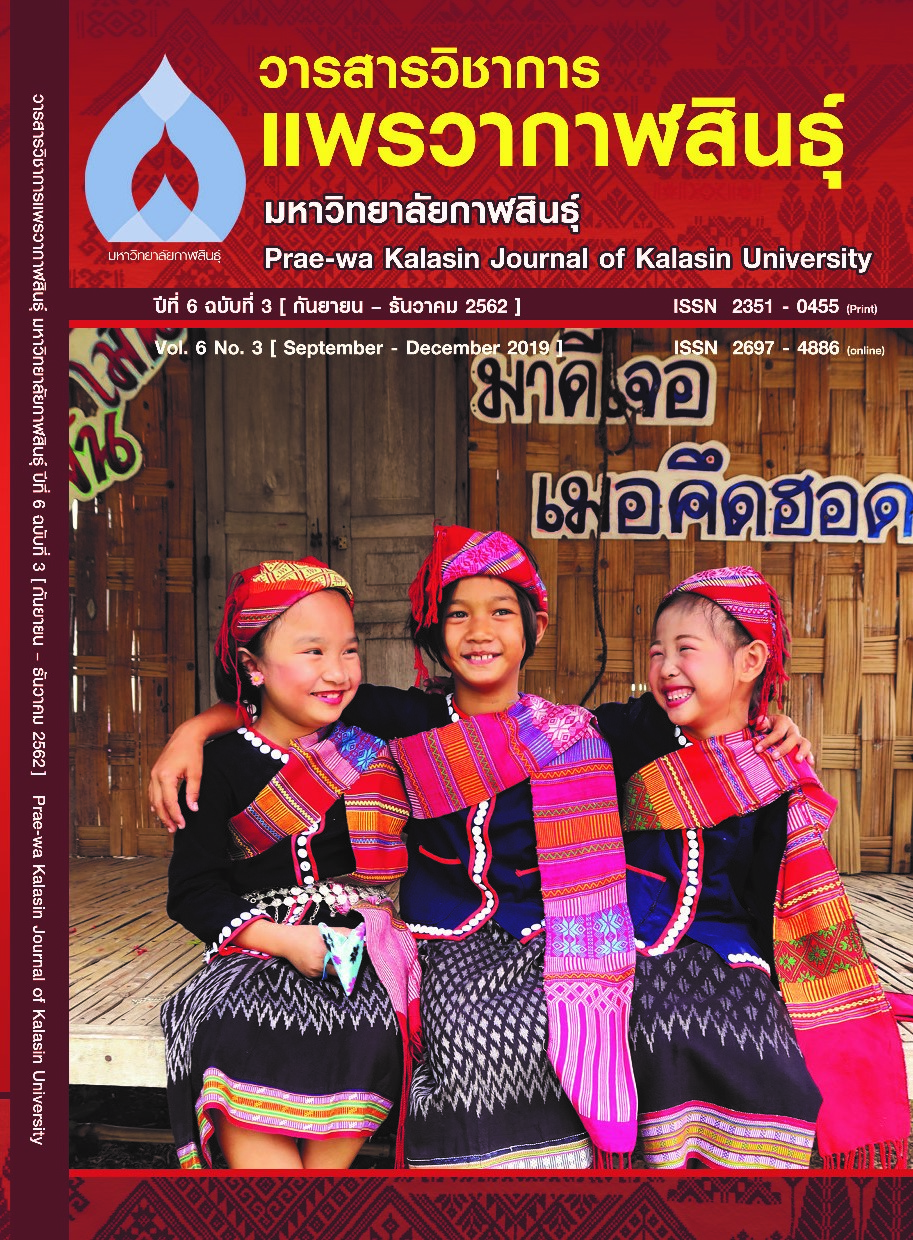Stem Education Activity Design for Creative Problem-Solving Skills of Secondary School Students
Main Article Content
Abstract
STEM Education activity is an activity that focuses on integrating contents of science, mathematics, and technology through engineering design. PDAR model is that can promote the Creative Problem Solving Skills of secondary school students. It consists of 4 steps: 1. P- Preparation 2. D-Design and Planning 3. A-Activity and Development and 4. R-Reflective and Reward. The teacher is an important person in designing activities. Keep up to date with the latest news and create a fun learning environment. Focus on the students to act. Sharing thoughts and problems. Create a variety of ways to find answers to problems. And lead the success. Enthusiastic This makes the students more satisfied and want to participate in more activities.
Article Details
Section
Articles (บทความ)
References
เกรียงศักดิ์ เจริญวงศ์ศักดิ์.(2556). ความคิดเชิงสร้างสรรค์. พิมพ์ครั้งที่ 6. กรุงเทพฯ: บริษัท ซัคเซส มีเดีย จำกัด.
Kreangsak jaleornwongsak. (2013). Creative thinking. 6th Edition.Bangkok :zukzes media co.th.
ปาริชาติ ประเสริฐสังข์. (2559). การออกแบบกิจกรรมการเรียนรู้ตามแนวคิดสะเต็มศึกษา. วารสารวิชาการแพรวากาฬสินธุ์ มหาวิทยาลัยกาฬสินธุ์, 3(3),129-140.
Prasertsang, Parichart. (2016). Learning Design for STEM Education. Prae-waKalasin Journal of Kalasin University, 3(3), 129-140.
ปาริชาติ ประเสริฐสังข์. (2556). การออกแบบหลักสูตร. พิมพ์ครั้งที่ 1. ร้อยเอ็ด : รุจรวีการพิมพ์.
Parichart Prasertsang. (2013). Curriculum Design. 1stEdition. Roi Et : Rujraweekarnpim.
พนม เกตุมาน. (2546). สุขใจกับลูกวัยรุ่น. กรุงเทพฯ : บริษัทแปลน พับลิชชิ่งจำกัด.128 หน้า.
Panom ketman. (2003). Happy with the teen. Bangkok : Plane Publishing Co., Ltd.128 pages.
Capraro & Morgan. (2013). STEM Project-Based Learning : An Integrated Science, Technology, Engineering, and Mathematics (STEM) Approach. Second Edition, Sense Publishers,1-7.
Joyce, B., Weil, M., & Calhoun, E. (2009). Models of teaching. Englewcod Cliffs, NJ: Prentice Hall.
J.Vennix, P.den Brok, R. Taconis. (2017). Perceptions of STEM-based outreach learning activities in secondary education. Eindhoven School of Education, Eindhoven University of Technology, P.O. Box 513, 5600 MB Eindhoven, The Netherlands.
Lieve Thibaut, Heidi Knipprath,Wim Dehaene and Fien Depaepe. (2017). How school context and personal factors relate to teachers’attitudes toward teaching integrated STEM. Springer Science+Business Media B.V.2017.
Vasquez,Jo Anne., Comer, Michael.,Sneider, Cary. (2013). STEM Lesson Essentials, Grades 3-8: Integrating Science, Technology, Engineering, and Mathematics. Heinemann Publisher. 16-19.
Kreangsak jaleornwongsak. (2013). Creative thinking. 6th Edition.Bangkok :zukzes media co.th.
ปาริชาติ ประเสริฐสังข์. (2559). การออกแบบกิจกรรมการเรียนรู้ตามแนวคิดสะเต็มศึกษา. วารสารวิชาการแพรวากาฬสินธุ์ มหาวิทยาลัยกาฬสินธุ์, 3(3),129-140.
Prasertsang, Parichart. (2016). Learning Design for STEM Education. Prae-waKalasin Journal of Kalasin University, 3(3), 129-140.
ปาริชาติ ประเสริฐสังข์. (2556). การออกแบบหลักสูตร. พิมพ์ครั้งที่ 1. ร้อยเอ็ด : รุจรวีการพิมพ์.
Parichart Prasertsang. (2013). Curriculum Design. 1stEdition. Roi Et : Rujraweekarnpim.
พนม เกตุมาน. (2546). สุขใจกับลูกวัยรุ่น. กรุงเทพฯ : บริษัทแปลน พับลิชชิ่งจำกัด.128 หน้า.
Panom ketman. (2003). Happy with the teen. Bangkok : Plane Publishing Co., Ltd.128 pages.
Capraro & Morgan. (2013). STEM Project-Based Learning : An Integrated Science, Technology, Engineering, and Mathematics (STEM) Approach. Second Edition, Sense Publishers,1-7.
Joyce, B., Weil, M., & Calhoun, E. (2009). Models of teaching. Englewcod Cliffs, NJ: Prentice Hall.
J.Vennix, P.den Brok, R. Taconis. (2017). Perceptions of STEM-based outreach learning activities in secondary education. Eindhoven School of Education, Eindhoven University of Technology, P.O. Box 513, 5600 MB Eindhoven, The Netherlands.
Lieve Thibaut, Heidi Knipprath,Wim Dehaene and Fien Depaepe. (2017). How school context and personal factors relate to teachers’attitudes toward teaching integrated STEM. Springer Science+Business Media B.V.2017.
Vasquez,Jo Anne., Comer, Michael.,Sneider, Cary. (2013). STEM Lesson Essentials, Grades 3-8: Integrating Science, Technology, Engineering, and Mathematics. Heinemann Publisher. 16-19.

